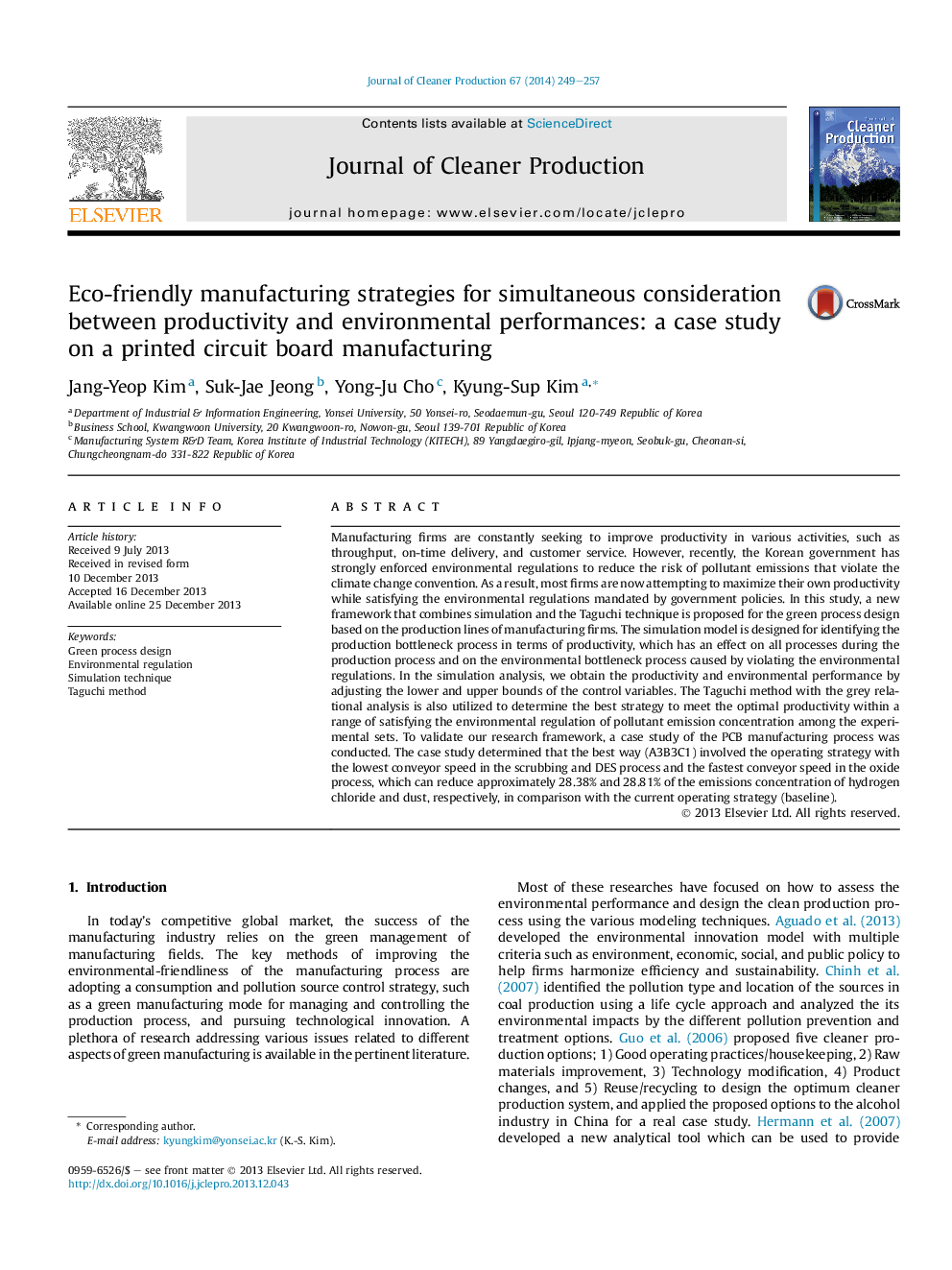| کد مقاله | کد نشریه | سال انتشار | مقاله انگلیسی | نسخه تمام متن |
|---|---|---|---|---|
| 1744959 | 1522179 | 2014 | 9 صفحه PDF | دانلود رایگان |
Manufacturing firms are constantly seeking to improve productivity in various activities, such as throughput, on-time delivery, and customer service. However, recently, the Korean government has strongly enforced environmental regulations to reduce the risk of pollutant emissions that violate the climate change convention. As a result, most firms are now attempting to maximize their own productivity while satisfying the environmental regulations mandated by government policies. In this study, a new framework that combines simulation and the Taguchi technique is proposed for the green process design based on the production lines of manufacturing firms. The simulation model is designed for identifying the production bottleneck process in terms of productivity, which has an effect on all processes during the production process and on the environmental bottleneck process caused by violating the environmental regulations. In the simulation analysis, we obtain the productivity and environmental performance by adjusting the lower and upper bounds of the control variables. The Taguchi method with the grey relational analysis is also utilized to determine the best strategy to meet the optimal productivity within a range of satisfying the environmental regulation of pollutant emission concentration among the experimental sets. To validate our research framework, a case study of the PCB manufacturing process was conducted. The case study determined that the best way (A3B3C1) involved the operating strategy with the lowest conveyor speed in the scrubbing and DES process and the fastest conveyor speed in the oxide process, which can reduce approximately 28.38% and 28.81% of the emissions concentration of hydrogen chloride and dust, respectively, in comparison with the current operating strategy (baseline).
Journal: Journal of Cleaner Production - Volume 67, 15 March 2014, Pages 249–257
